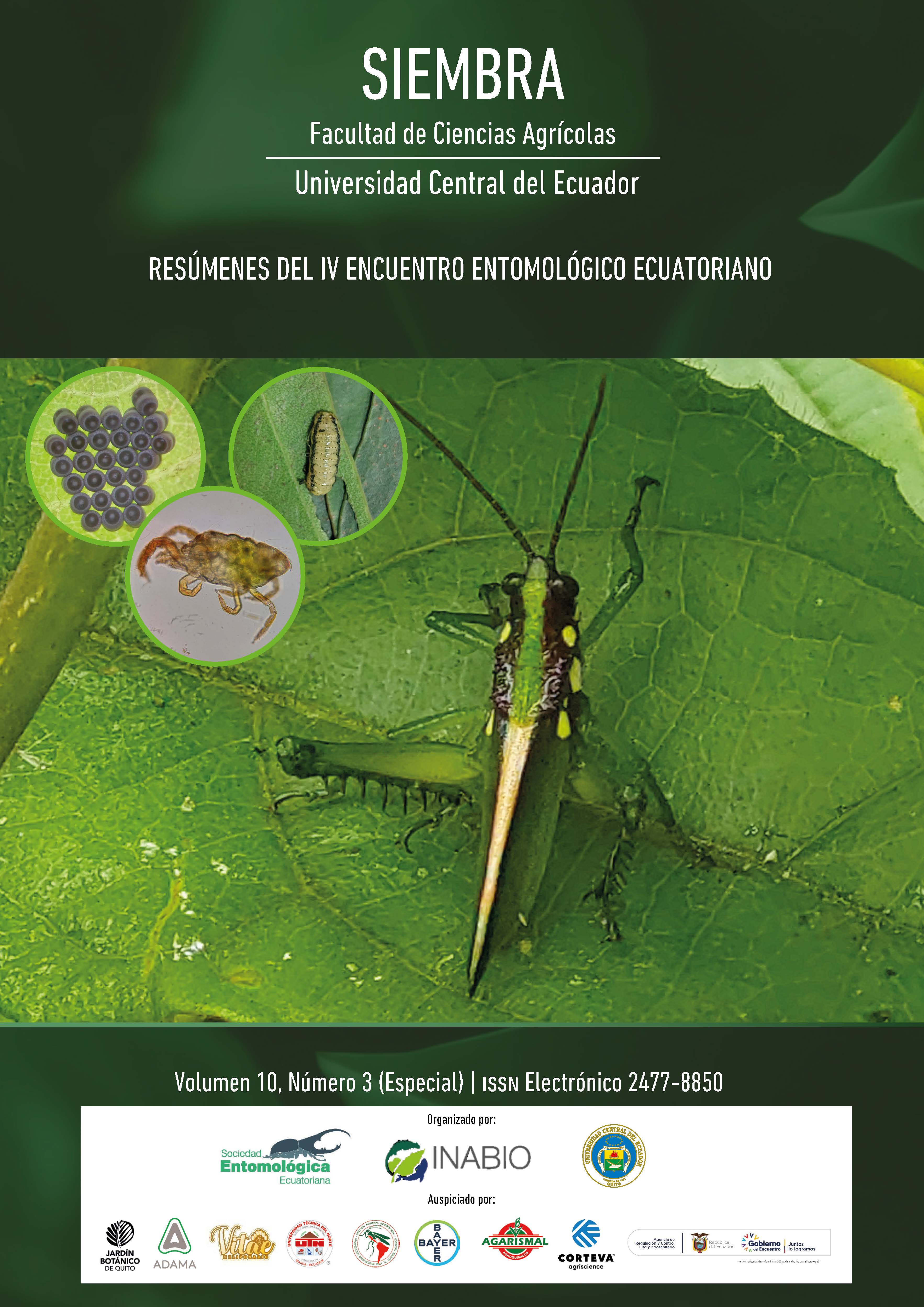ED020. Spatial patterns of insect diversity in continental Ecuador
Main Article Content
Abstract
Insects are one of the most important animal groups in the planet because they maintain ecosystems services and are an important part of the global animal biomass. A great diversity of species makes this groups the most diverse of all animals. However, insect regional spatial diversity patterns are still poorly understood, being especially undocumented in the highly diverse regions, such as the Neotropics. Part of this issue is due to the inexistence of a harmonized insect occurrence database at national levels. Here, we use the case of continental Ecuador (excluding the Galápagos archipelago) to map the knowledge gaps in spatial patterns and regional diversity by making use of an extensive database. Our principal result suggest that the Andes is the main biogeographical barrier in continental Ecuador. Amazonia and the western slope of the Andes are the most species-rich regions; the norther region concentrates the higher registered occurrences. Our results support conservation actions for this group, from biogeographic and macroecological perspective.
Downloads
Metrics
Article Details

This work is licensed under a Creative Commons Attribution-NonCommercial 4.0 International License.
The authors who publish in Siembra know and accept the following conditions:
- Authors retain the copyright and grant Siembra the right of first publication of the work, under the Creative Commons Attribution License. Third parties are allowed to use what has been published as long as they refer to the author or authors of the work and its publication in this journal.
![]() This content is licensed under a Creative Commons Attribution-Noncommercial 4.0 International (CC BY-NC 4.0).
This content is licensed under a Creative Commons Attribution-Noncommercial 4.0 International (CC BY-NC 4.0).
- Authors maintain the copyright and guarantee Siembra the right to publish the manuscript through the channels it considers appropriate.
- Authors may establish on their own additional agreements for the non-exclusive distribution of the version of the work published in Siembra, acknowledging their initial publication in the same, such as in institutional repositories.
- Authors are authorized to disseminate their work electronically once the manuscript is accepted for publication.

